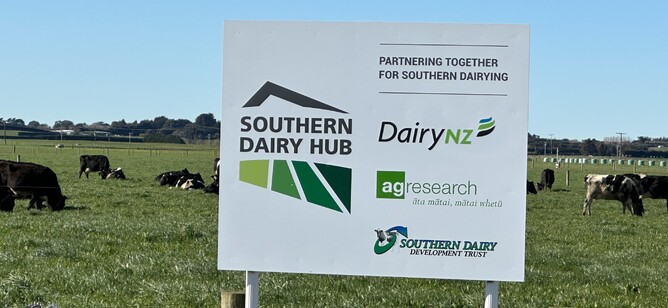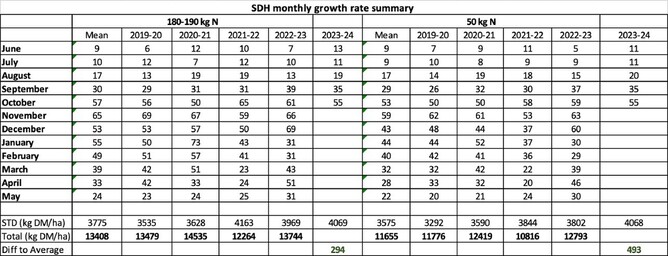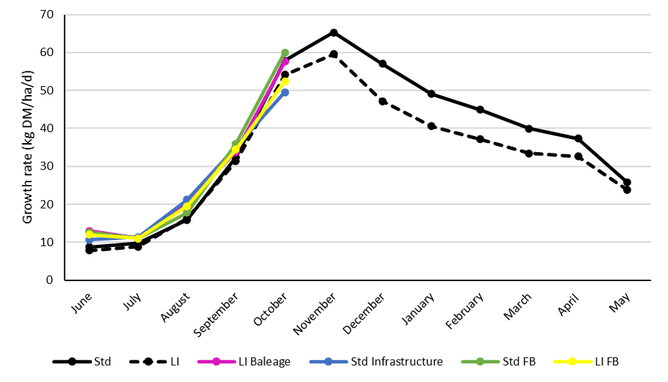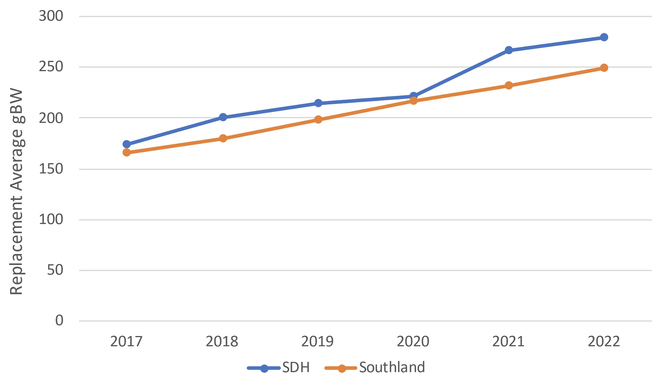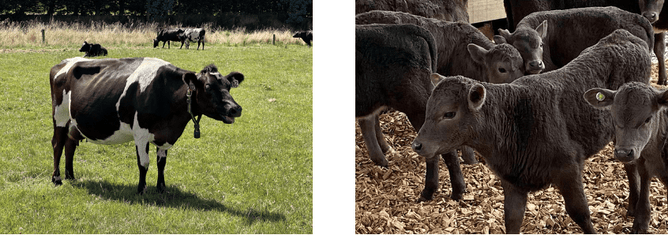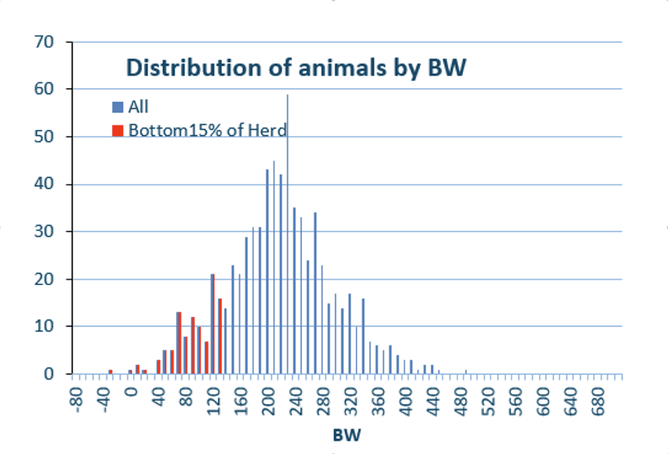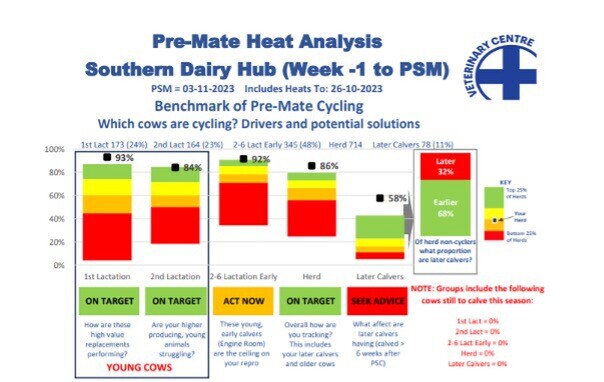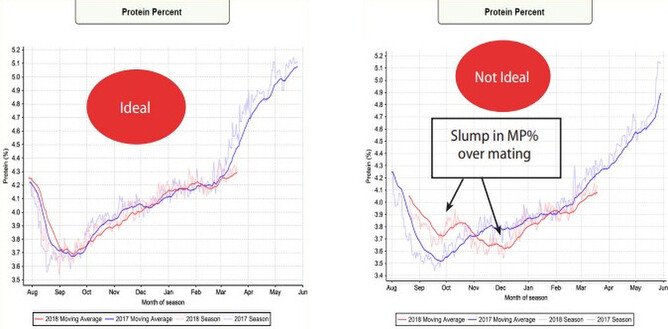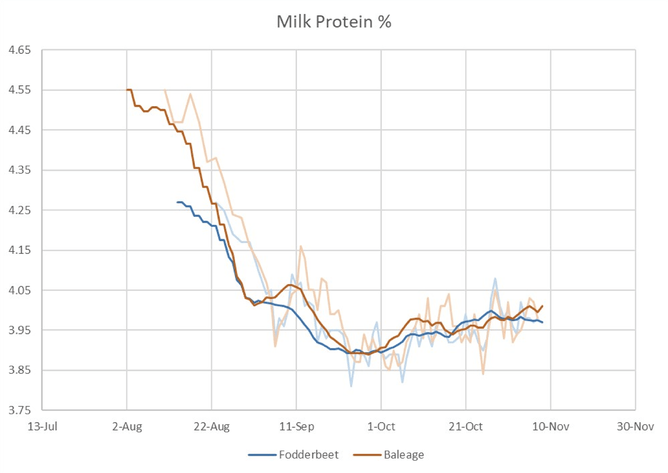Summer Newsletter
Andrea Dixon – General Manager, Southern Dairy Hub
I’m four months into my new role and I’m loving it. It’s really busy – but in a good way. We’re set up for a good season with grass growth and we’re making gains in production.
Cultivation has gone well and Fodder Beet went in last week. We’re busy testing the quality of the grass (ME and crude protein) we’re looking to purchase for baleage as we need to make sure the quality of the baleage that goes into the system is top notch.
Staffing and recruitment is a challenge, much like for the rest of the sector. We are continually operating at reduced staff and credit to the great SDH team for picking up the load and for their passion and energy to get the job done.
There has also been a focus on systems and processes, and I’ve spent quite a bit of time at a computer working out budgets, income, outgoings and where we can make savings. That’s a good segway to say thank you to our amazing founding sponsors, without whom we couldn’t do what we do.
I’ve also been hosting quite a few visitors to the farm, including James Standon, a Research Director from a research farm in Newcastle (UK). I found his visit fascinating, as he has all the same goals, objectives, challenges and issues we have, just on the other side of the world.
Next week I’m off to Taranaki Dairy Trust, along with Northland Dairy Development Trust, to look at ways we can collaborate and utilise our resources to share our regional learnings nationally. This is an exciting step as we begin to work more closely together.
News
If you missed our October Field Day, we have all the presentations and videos of the speakers (done in-house so forgive the missed quality please) on our website.
Our next Field Day is coming up on 12 March 2024. We’re just working on the agenda now (it’ll be a goodie!) and if there is anything you’d like to hear from us or from our research partners, then flick me an email. Pop the date in your diaries now!
Meet Billy, our Farm Manager
Billy (Baljit) Singh is our fabulous Farm Manager. Originally from North India, where he milked on the family farm, he moved to New Zealand in 2010 and joined our team as a relief milker in October 2018, before becoming the Farm Manager three years later. He lives in the area with wife, daughter and expecting his second child soon.
Billy is truly passionate about dairy farming. He leads a team of six and spends most of his time planning and organising, given the complexity of the operation.
From the Farm
SDH September growth rate and pasture quality summary (to 31 October)
Grass continues to grow well across the different farmlets, including the low Impact-Nitrogen (where we only add a max of 50 kgN per hectare per year compared to the standard farmlet where we add a maximum of 180 kgN).
We’ve had pasture growth between 170 and 369 kg Dry Matter (DM)/ha higher season to date than the average of the previous four years. Except for September, every month since June has had higher average pasture growth (see table below).
The results of the first samples collected from the third rotation are back from the lab and we are very pleased with the quality of the pasture on offer.
There is a lot of variation in DM content driven by pasture species and weather conditions at the time of sampling. Third-round plantain pastures sampled have averaged 12% dry matter and non-plantain pastures 16.5%.
Fibre levels are remaining relatively constant which is encouraging given the challenges we have had regarding achieving residuals in many paddocks. The targeted residual 1650 kgDM ME (metabolisable energy) was above 12 for all paddocks and crude protein between 19 and 21%. Our targets are to be above 11.5 ME and 15% crude protein to ensure good quality, easily digestible and palatable feed is fed to the cows.
Breeding the next generation
We reviewed last year’s milk production data and broke it down to quartiles. The top quartile animals for the Hub averaged 657 kg milksolids (MS) v. the bottom quartile animals at 482 kg MS. That’s 175 kg MS more over the season (animals above 90% ancestry and who had completed more than four herd tests in the 2023 season). There is a similar theme with the Southland herds resulting in 180 kg MS difference between top and bottom quartiles.
The top quartile groups also have a higher breeding worth (BW), with a 54 BW difference in the SDH herd from top to bottom and 65 BW difference in the Southland herds.
To lift production, we will breed replacements from more of the top quartile cows.
Table data – animals included have ancestry above 90% and have completed more that 4 herd tests during the 2022 season)
When we look at genetic gain for SDH over time it has increased on average by 21 gBW per year over five years, compared to the Southland average of 16 gBW.
When trying to manage genetic gain in a research herd there are many things to consider:
We need to ensure all herds are treated the same (i.e. the mating plan is the same for each herd including the beef straw allocation)
We don’t want to impact or influence six week in calf rates (i.e. being mindful of lower conception rates when using sexed semen)
We need to ensure there are enough replacements (replacement rate 25% currently) to guarantee there are enough animals to feed into each herd and not impacting the research data.
Even with considerations, SDH can still increase genetic gain year on year by being strategic in the mating plan decisions and utilising calf pen selection when calves are born.
This mating season (2023) SDH will be mating the bottom 15% to beef to help accelerate genetic gain by ensuring we don’t keep replacements from these animals (graph shows the cows in the bottom 15% percentile that will be mated to beef).
To get enough replacements, we will need to use sexed semen in the top genetic merit, early calved, mixed aged cows. We will only do this for the first two weeks to ensure any cows that don’t hold to the sexed semen have another opportunity to be mated during the replacement AI period.
We expect the 2024 progeny BW to be 329 BW which is a considerably higher than the 2023 born animals at 288 BW – a gain of 41 BW. This represents an extra 10 kg MS year on year from this group of animals; 1840 kg MS from 200 animals at a milk price value of $7.25 equates to $13,340 per year.
The two beef breeds chosen this year are bulls from Torrisdale Murray Grey stud (local Southland Stud) and Charolais straws from Kakahu Stud in Fairlie. These specific bulls have been chosen for marking, calving ease, polled, great growth rates and IMF (Intermuscular fat) scores and were all in the L+LNZ Genetics Dairy Beef Progeny test, lifting the accuracy of their data.
We are excited about this year’s mating plan and mating has started well. The below Benchmark report from Ryan Luckman (Waimate Vet Centre) shows 93% of the 1st lactation animals had cycled prior to planned start of mating and 84% of second lactation cows. SDH had 80 non-cycling cows more than 42 days calved at PSM. This list of animals was narrowed down based on age, BW and BCS information with 29 CIDR cows being identified for early synchrony. We will continue to priority feed or milk cows OAD that drop below our BCS thresholds (4.5 for MA and 5 for R2 and R3 animals) during the mating period and will also look to do another round of CIDR treatment for later calving cows in the coming weeks.
We will certainly be utilising all tools available to us during mating to make proactive decisions to ensure a successful mating result.
Ryan Luckman also provided the following insights about having cows ‘on a rising plane’.
At a herd level your milk protein percentage is quite a good indicator of energy status of the herd. For most herds the lowest point in milk protein percentage is seen in late September and from here ideally you will see a steady gradual rise through the rest of the season (referred to as the Nike tick).
SDH’s protein curves (in both trial groups) have shown a steady rise since September, which matches with the good pre-mate cycling rates. The line does appear to have flattened off currently and is something that we will have to keep an eye on going into the second round of mating.
Flat or dropping curves during mating can indicate cows are likely to be in periods of negative energy balance, which can affect second round conception rates AND increase the numbers of phantom cows in the herd.
The graph is the Southern Dairy Hubs milk protein graph. I would encourage you to download your farms Milk Protein percentages from your milk supply company to check you are on track for a great mating.
From our Researchers
Researchers study new ways to monitor and manage heat stress
Heat stress in herds is already a seasonal challenge in some regions, and is expected to become more common in New Zealand as the climate changes.
DairyNZ, AgResearch and Fonterra researchers are working together to better understand, and help farmers monitor and respond to heat stress.
Researchers shared at a recent SDH field day that they have been developing a Grazing Heat Load Index to assess heat stress in grazing cows, and are now working to make this as accurate as possible in New Zealand conditions.
The index helps assess the impact of heat on cow wellbeing. It considers temperature, humidity, and factors like sunshine and wind.
In summer 2023, researchers observed cows on eight farms in Northland, Waikato, Canterbury, and Southland (SDH). They recorded weather data, milk production, how fast cows were breathing, panting, and used sensors to collect information such as rumen temperature.
This was the first time significant detailed data has been collected from South Island cows. Cows had respiration rates of over 60-70, and sometimes up to 100, breaths per minute – indicating heat stress was occurring.
This data is being used to better predict when cows might start feeling heat stress. Technology is a key to data collection –and it could help farmers better manage heat stress to maintain milk production.
Further research is needed to better understand how animal features such as cow breed, coat colour, and farm set up affects heat stress and milk production.
To manage heat stress, it's recommended farmers consider using cooling strategies when temperatures rise above 20oC. Read more on research and advice.
–
You can follow us on Facebook or check out our research projects at our website. Have a wonderful rest of November and lead up to Christmas.
Nga mihi, Andrea

